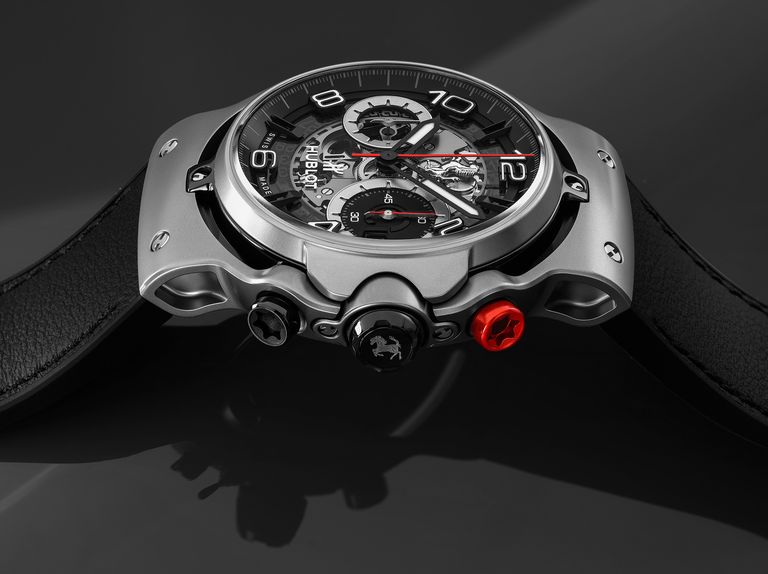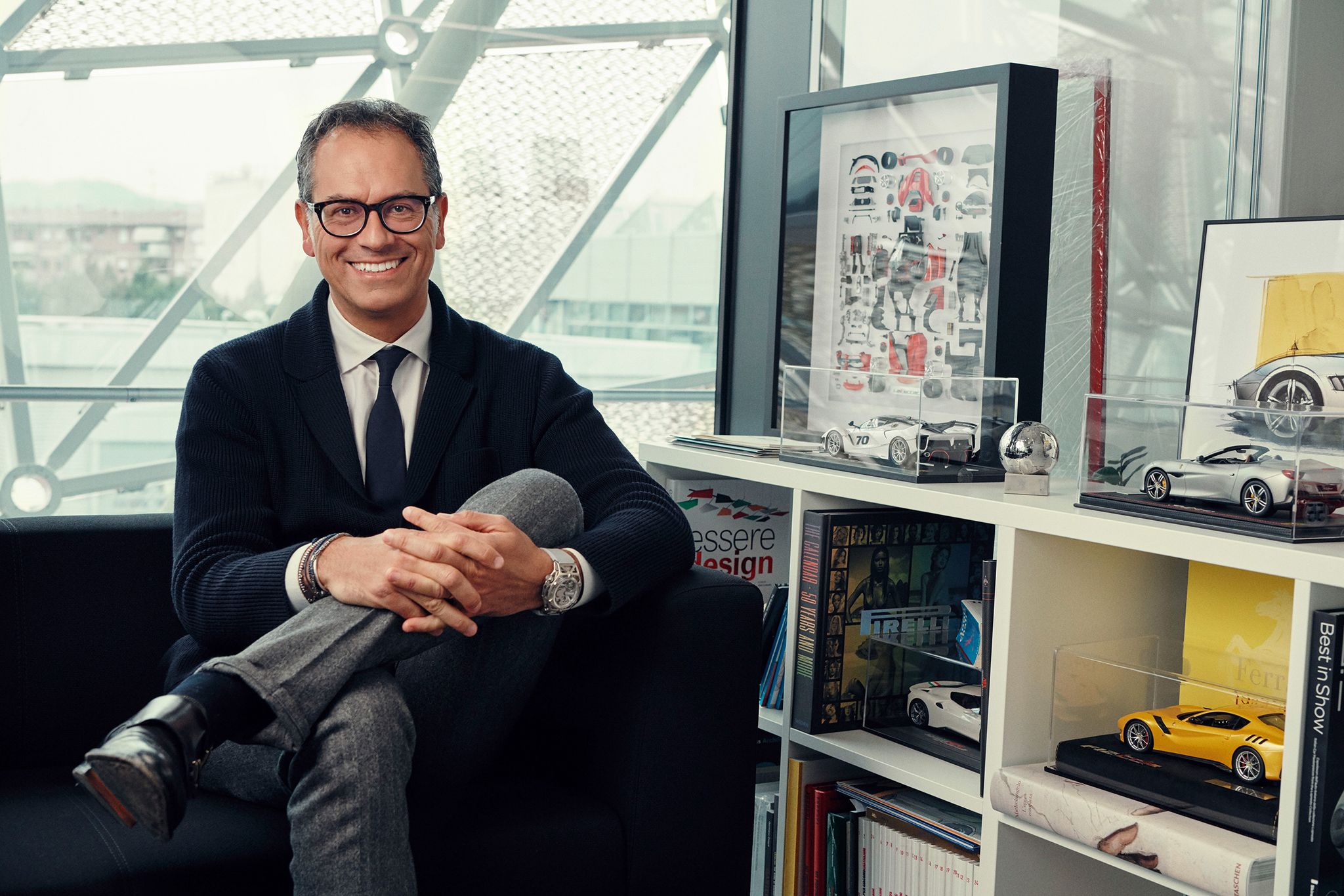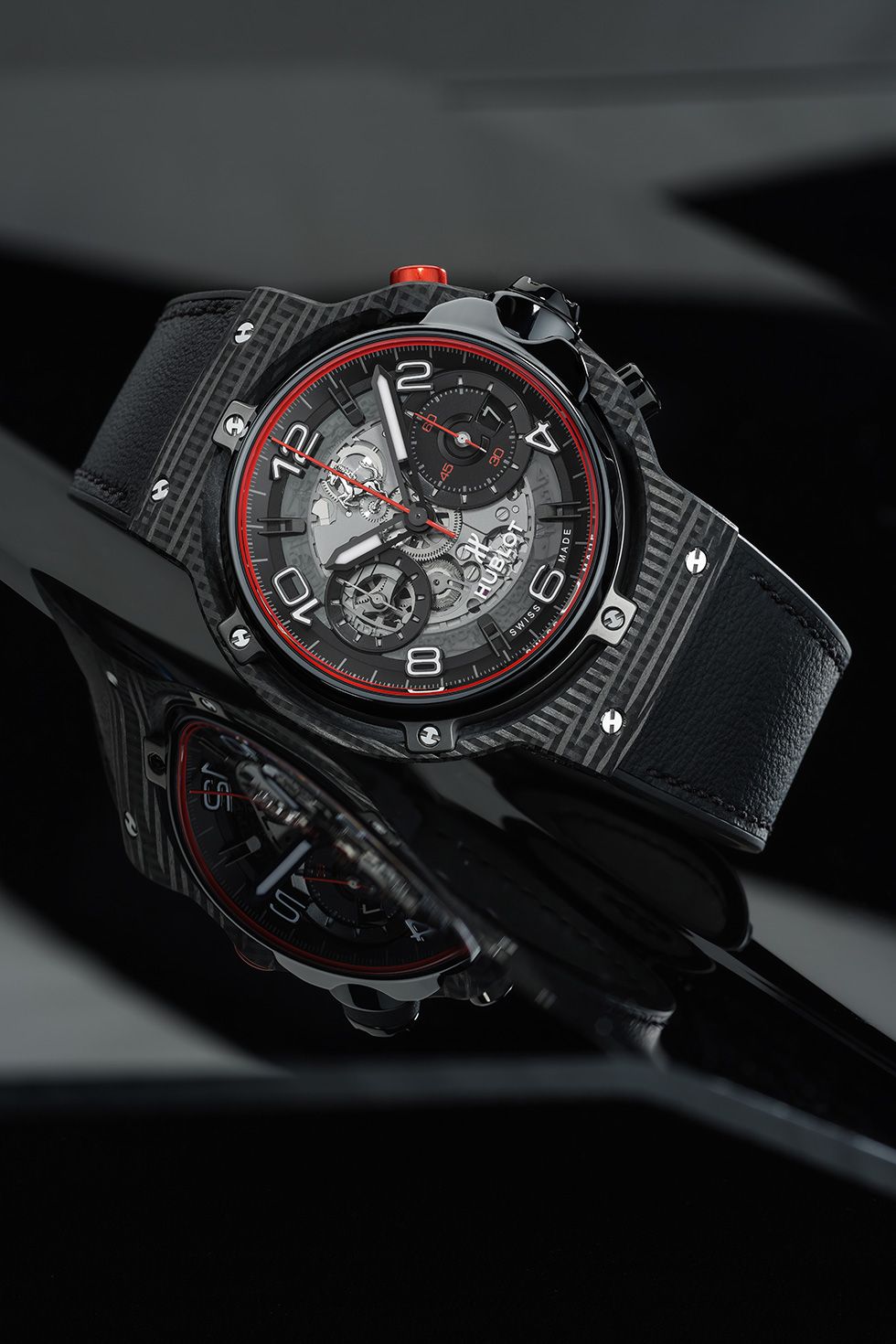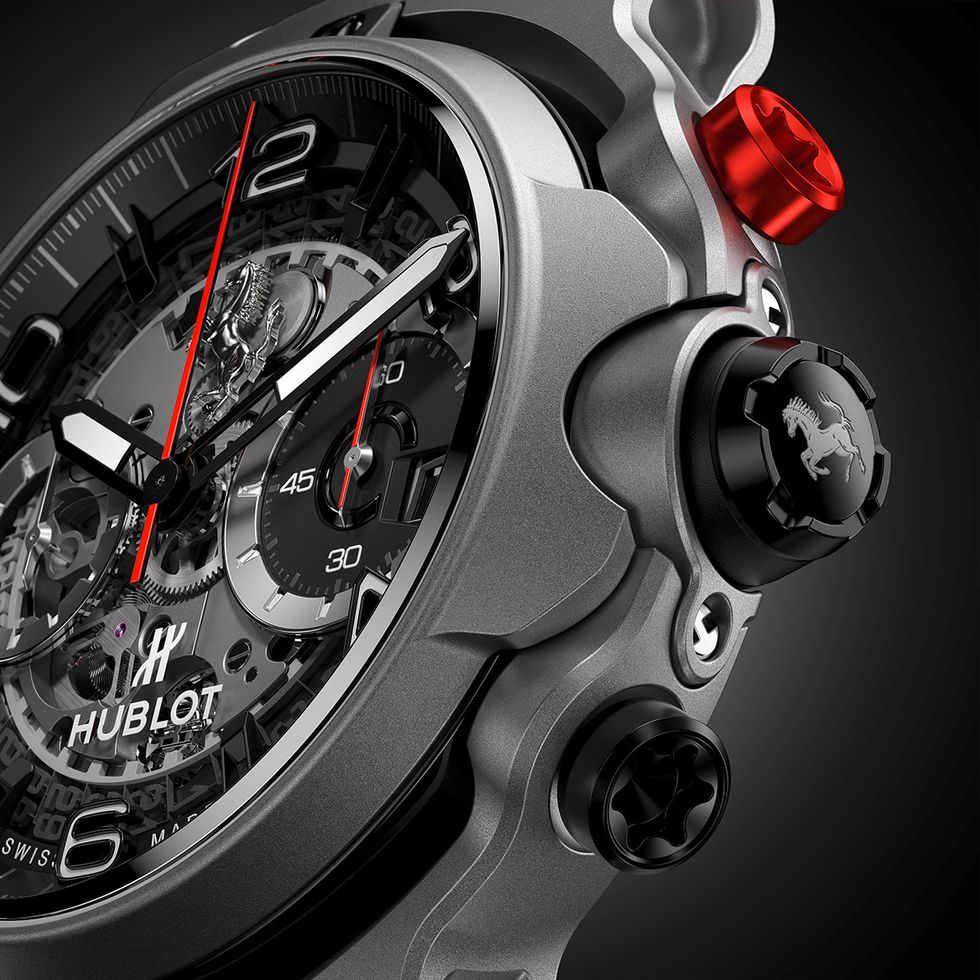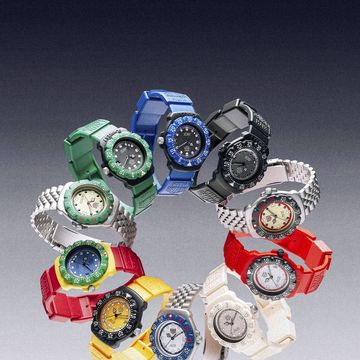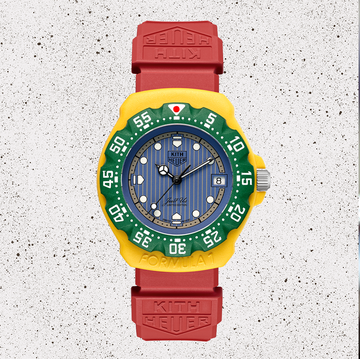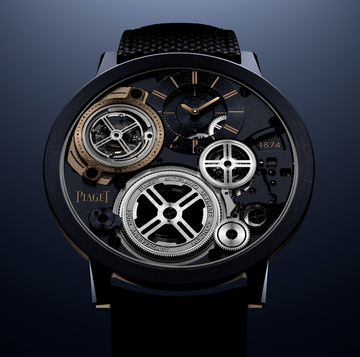Capricious, Machiavellian and demanding, Enzo Ferrari was by all accounts the very stereotype of a maniacal leader. He called himself “an agitator of men” and pursued success on the racetrack at all costs, describing motor racing as “a great mania to which one must sacrifice everything, without reticence, without hesitation”. Perhaps unsurprisingly for one who fostered a severe, irascible image, he was not known as a generous man — yet that could change suddenly and dramatically if results went his way.
History has it Ferrari’s godfather gave him a silver watch at his first communion, a gesture which stayed with him into adulthood. He habitually visited a Bolognese jeweller, Gerardo Veronesi, and purchased half a dozen or more watches of various makes: Lemania and Vetta chronographs; time-only watches from Girard-Perregaux, Super Royal, Longines and many others. Instructing the jeweller to have the dials stamped with the prancing horse, they would then be given as gifts to drivers, mechanics, other employees and anyone who displayed sufficient loyalty to all things Maranello. When Ferrari-badged watches from the vintage era crop up at dealers or auctions, this is what you're looking at.
The first watch company to sponsor the Scuderia Ferrari was, of course, Heuer, whose monopoly over Formula One in the Seventies is legend. The relationship didn’t yield much in the way of what we would think of as a “Ferrari watch”, however. Famously, Heuer did create the Monza to mark Niki Lauda’s championship triumph in 1976, but the only watch to bear both Heuer and horse was the 1975 space-age “Chronosplit”, a digital watch with not one but two LED displays.
The first watch brand to produce any volume of Ferrari-branded models was Longines, which signed a deal to sponsor the F1 team in 1980. It had already been sponsoring Renault since 1977, and would soon become the official timekeeper of the whole sport — an arrangement which lasted until TAG Heuer took over in 1988. During the early Eighties, Longines produced a number of co-branded watches: rounded rectangular cases on yellow gold and stainless steel riveted bracelets, the word “Quartz” proudly displayed on the dial. Some had the Ferrari logotype printed in black at six o’clock; others the yellow Ferrari badge printed atop the beige dial in the same position.
Later that decade, a number of “Ferrari Formula” chronograph watches were produced by Cartier: outré asymmetrical pieces blending black PVD with yellow gold and more uses of the word “Ferrari” on one watch than anyone would think possible (and powered by Seiko quartz movements). As was Cartier’s wont under Alain Perrin, the deal also saw Cartier make Ferrari-branded accessories including cufflinks, pens and sunglasses.
As the watch market began its reinvention as a purely luxury business in the early Nineties, Ferrari embarked on the first of its more “serious” partnerships in 1994, with Girard-Perregaux. Introduced thanks to the friendship between then-G-P chairman Luigi Macaluso and Ferrari president Luca di Cordero Montezemolo, it ran for 10 years and retains a soft spot in the minds of many horophiles. Uncomplicated in concept or execution, the collection consisted predominantly of three-register chronographs with the Cavallino either on its yellow shield or picked out in black or silver at 12 o’clock, with the watchmaker’s logo relegated to the six o’clock sub-dial.
The Panerai years (2005–’10) are never as fondly remembered, despite — or perhaps because of — following the same tried-and-tested formula of red, yellow and black dials with the various Ferrari logos deployed front and centre. Neither brand was able to really make the “shared Italian heritage” line stick and some two dozen limited editions later the partnership came to an end. In a sudden change of direction — and a nod to the heady over-the-top days of arcane complications — in 2010, Ferrari signed off on an avant-garde tourbillon fusee and chain piece in titanium, magnesium and carbon fibre by Cabestan, priced at $300,000.
In November 2011, Hublot was announced as the official timekeeper of Ferrari, at an all-singing ceremony in Mugello. It created a splash even by Hublot’s energetic standards; Ferrari was, and remains, far and away the brand’s biggest partnership deal. The brands seemed a good match: extroverted, technical and seemingly immune to overexposure. Yet for the first few years, it appeared to be business as usual for the watches: Rosso Corsa and Giallo Fly merged with lashings of gold and carbon fibre; a Ferrari stamp on a Hublot template.
That changed in 2013 with the release of the MP-05 LaFerrari — a 50-day power reserve, 11-barrel, vertical tourbillon hyperwatch that looked like nothing Hublot had ever created before (it did, however, share some basic movement architecture with the Cabestan — the indie brand had pioneered vertically-aligned movements). The MP-05 was followed by the Techframe monopusher tourbillon chronograph in 2017. This marked another turning point. Ferrari’s design team, headed up by Flavio Manzoni, had been invited to take a proper role in crafting the watch. The result was another watch unlike any other in the Hublot collection, with the dial taking a back seat to the spaceframe case that surrounds it and the Hublot logo almost invisible.
It’s described by Manzoni as “inspired by race cars”, and two years on he was ready to give us the road car equivalent. And despite its much more conventional, solid appearance, he begins by invoking architect Oscar Niemeyer: “We started the design of this thinking about the voids, more than the full volumes. Because the idea was to somehow have a very simple design, very clear, but leaving the engine, the soul, the core of the watch floating.” Equally surprisingly, given Hublot’s general preference for a contemporary, maximalist look, he goes on to cite two touchpoints of mid-century restraint.
“The inspiration comes from the beauty of certain dials — a nice example is the [dashboard of the Ferrari] California of 1957, which was quite bananas at the time! But thanks to the intrinsic beauty of these elements, these dials, the dashboard becomes absolutely stunning and iconic. And when it comes to the case, there is a very rigorous approach to the shape. As you can see, the geometries are very clear. Everything is based on concentric circle elements and straight lines. Do you remember the watches of Achille Castiglioni? This was an inspiration for me. Overall, there are elements that are typical of the watchmaking field, but the interpretation, I think, is peculiar.”
The fundamental key to the success of both the Techframe and the GT is the flexibility shown by Hublot to allow two totally new case shapes to enter the range. Every other Ferrari-branded watch — and every limited-edition partnership watch produced by any other brand — requires the partner brand to work within the constraints of the watch brand’s existing range. It’s a lesson Hublot has since applied in its work with Richard Orlinski and the tattoo parlour Sang Bleu; the further something is allowed to deviate from the basic template of a Hublot watch, the more effective it is.
Enzo Ferrari once said, “I give my collaborators complete trust. That is the only way to see if they deserve it.” In extending that trust back to Ferrari, Hublot has found a breakthrough that no watch brand before has managed.
Like this article? Sign up to our newsletter to get more articles like this delivered straight to your inbox.
